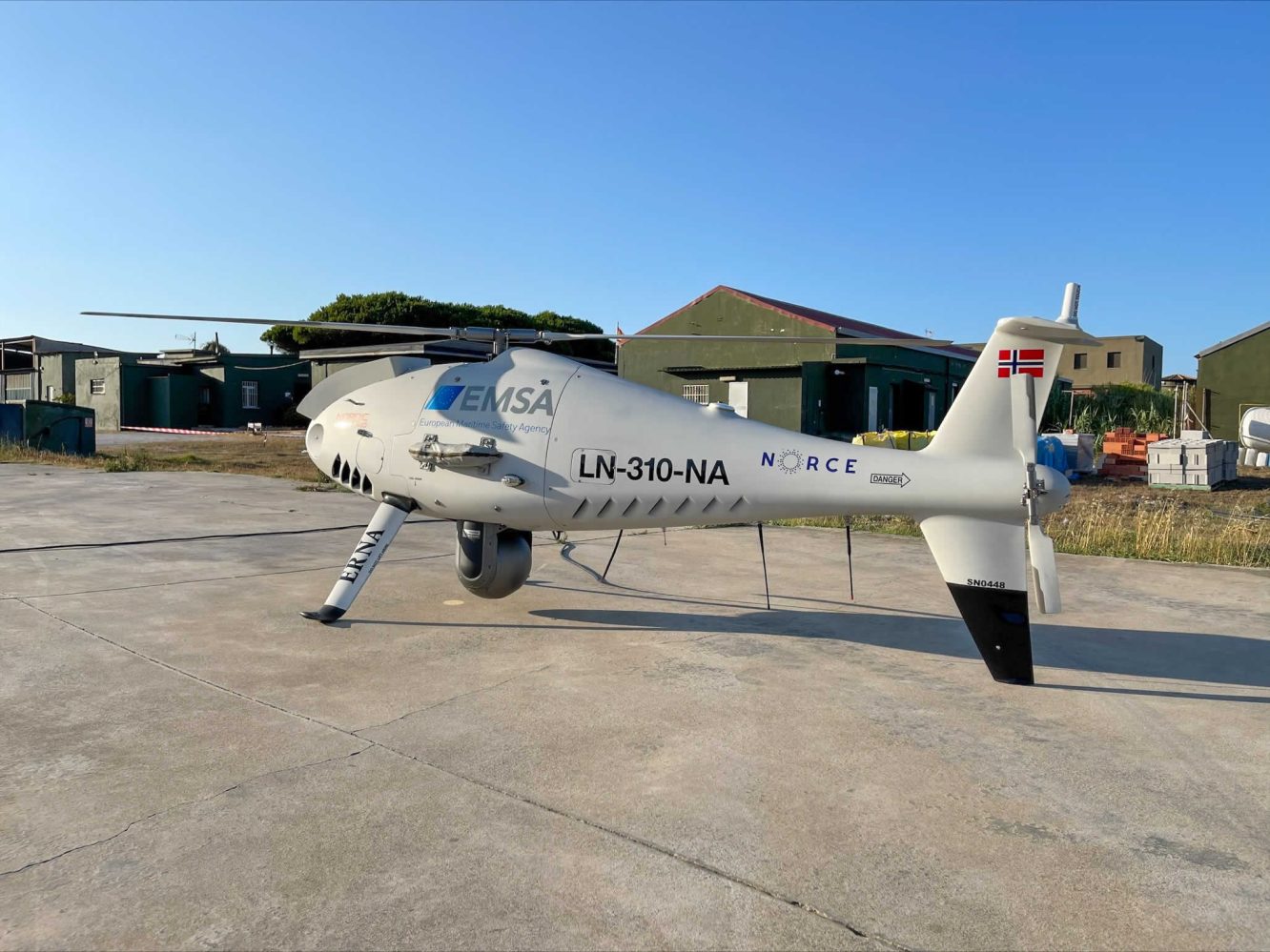
The European Union’s main agency for maritime activity is once again deploying drones in partnership with member nations in a common effort to detect and pursue large shipping companies violating tightened limits on sulfur emissions, which are major contributors to global warming.
The European Maritime Safety Agency (EMSA) announced it will be teaming up with Germany’s Federal Maritime and Hydrographic Agency in the upcoming large-scale deployment of drones in the Baltic Sea. The UAVs will collect and analyze the emissions content of passing ships, and relay measurements that exceed sulfur thresholds in real time to port authorities.
The three-month use of remotely piloted aircraft systems (RPAS) to monitor compliance by large sea vessels is slated to begin toward the end of April, and follows earlier campaigns in the Strait of Gibraltar, spots along the Atlantic coast, and Baltic waters off Lithuania.
The EMSA said the resumed emissions monitoring by drones will involve RPAS operating from the German Armed Forces site of Staberhuk on the east coast of Fehmarn island – a main point of maritime traffic for ships passing between Germany and southern Denmark.
The craft are equipped with specialized sensors to capture and measure exhaust plumes as they fly over or behind travelling vessels. Communications tech aboard then relays analyses indicating sulfur violations via the EMSA’s Port State Control information system, allowing authorities to investigate and potentially fine offending ships when they come to shore. Penalties already meted out have surpassed $10,000.
EMSA noted sulfur content in ship exhaust is now limited to just .10% in the Baltic Sea Emission Control Area. Those restrictions are part of a range of global reductions introduced in 2020 by the International Maritime Organization (IMO) to cut the considerable contribution that global cargo shipping makes to climate change.
Evidence collected by RPAS craft in previous campaigns, however, suggest shipping companies have been slow to cut those levels.
A series of EMSA flights last June in conjunction with Lithuania estimated that between 2% and 3% of all ships entering the Baltic Sea did not conform to IMO 2020 standards. Replication of that effort off Gibraltar last September indicated about 10% of large marine craft were either close enough to or exceeded maximum sulfur limits to merit follow-up inspections once in port.
The airborne monitoring of sea craft uses EMSA-owned Schiebel CAMCOPTER S100 vertical takeoff and landing drones. Those can fly two daily missions for maximum outings of six hours, and 60-plus miles per flight.
In addition to their gas-sniffing tech, the EMSA says drones in renewed Baltic flights will be equipped with multispectral aerial imagery sensors capable of measuring bathymetric values in shallower waters. Analyses of those will determine whether such UAV-captured data can significantly advance the work Germany’s hydrographic surveying service.
FTC: We use income earning auto affiliate links. More.



Comments